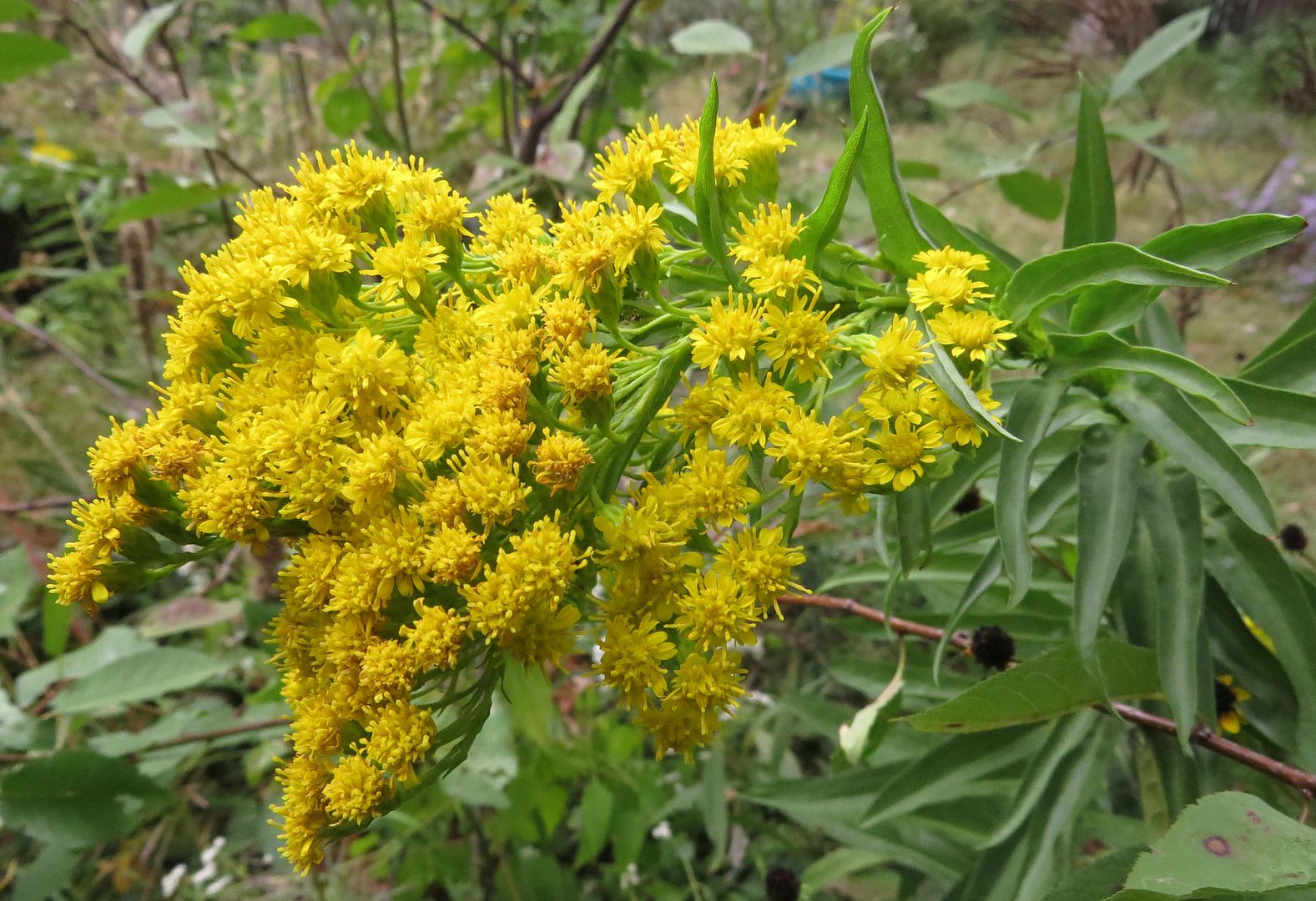I got a picture of a honeybee having an awkward moment. Without explanation this bee clearly looks poisoned or diseased, but really though it was perfectly fine and I watched it working droves of flowers in my patch of Tall Goldenrod, Solidago altissima. It was a cool day though and in the shade I just so happen to get the perfect shot as she decided to roll off of the flower instead of make a perfect take off as she'd done hundreds of times before.
I actually moved the patch of Solidago altissima to a dryer part of my yard. It's actually much better behaved there, spreading slowly instead of each cane producing seven more the following year, and growing only 5' tall instead of 13'. I'll still need to thin it out but probably only once every five years instead of every other.
Seaside Goldenrod, Solidago sempervirens, is also flowering. And I realized what it is that I love about this species. It has petals! And you can clearly see them, whereas the common Goldenrod species all have small petals that are so scraggly they almost blend in with the anthers. Pictured above it's a day or two past its prime but you can still make out what I mean with the most recently opened blooms at the top. They remind me of Golden Ragwort, and in fact if you google this species you'll see a picture of Golden Ragwort actually comes up.
One thing I don't like about the plant is their habit of falling over. Each plant produces a series of stems that all grow too long and flop over under the weight of their own flower buds. You can see the one above arching over a branch to one of my Beach Plums.
Seaside Goldenrod is a new species to my yard. I have a few of them planted in the sand patch I made, along with the Beach Plum. Hopefully they survive the winter. Where I live in New Jersey I'm closer to Pennsylvania than the Jersey Shore or Pine Barrens, so I'm well inland on a plot that's almost entirely clay. This species grows happily in 100% sand at the beach and does not occur naturally anywhere away from the coast or adjacent bays. Beach Plum also occurs here and did survive in my yard from last winter so hopefully these plants will too. I have one planted in the meadow garden where the soil is almost entirely clay. Actually it's neat digging in the meadow now because I see the 7 or so years of decomposing organic matter there is slowly turning the soil more loose and loamy.

